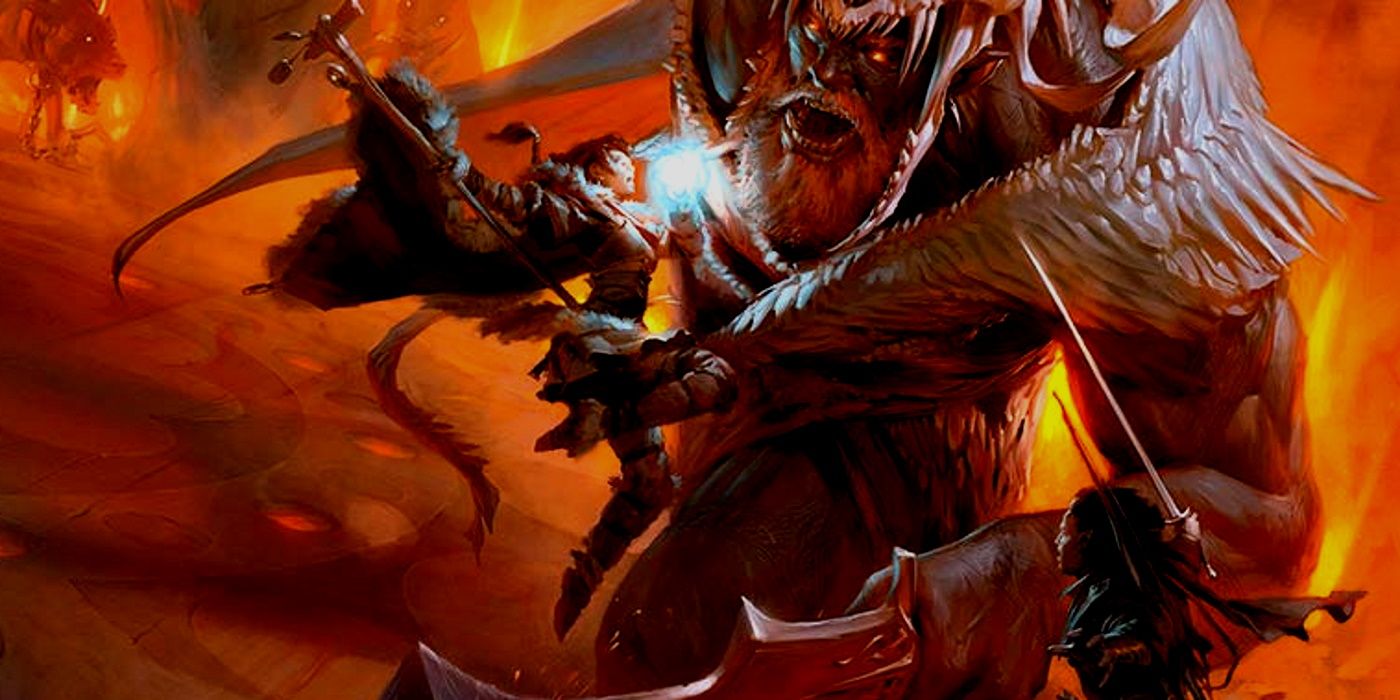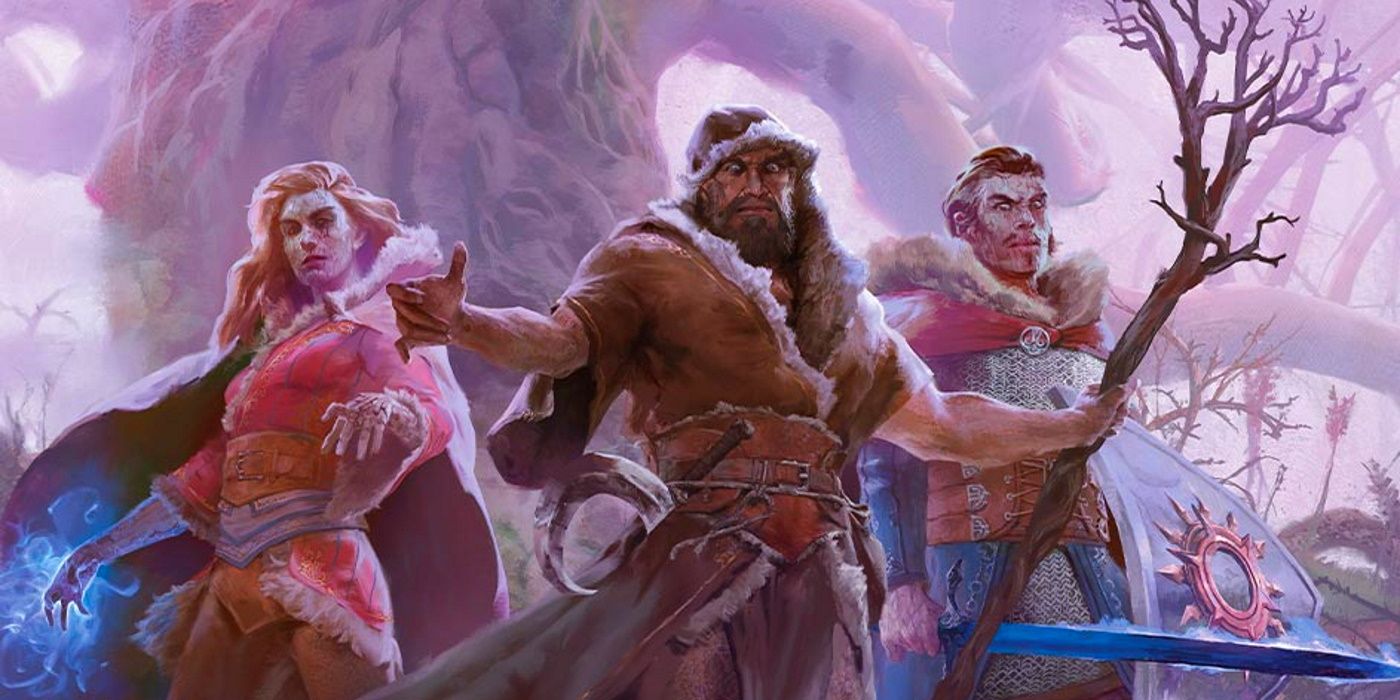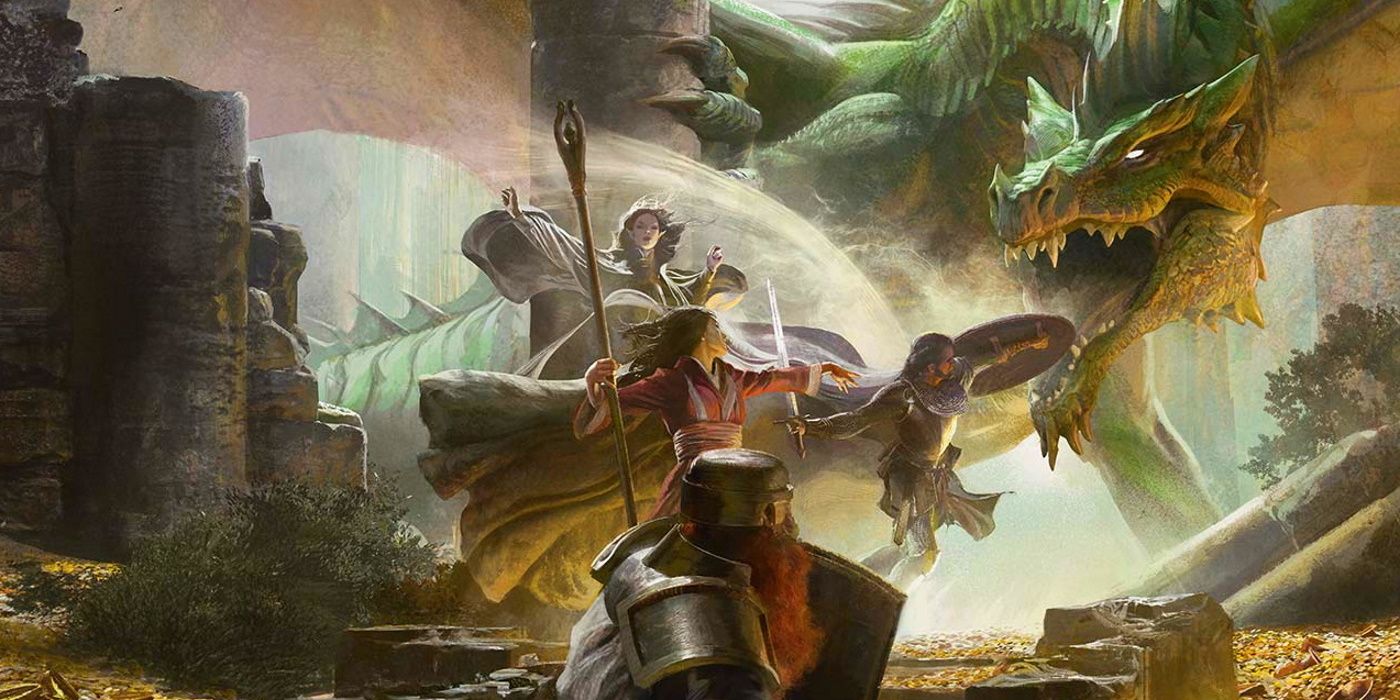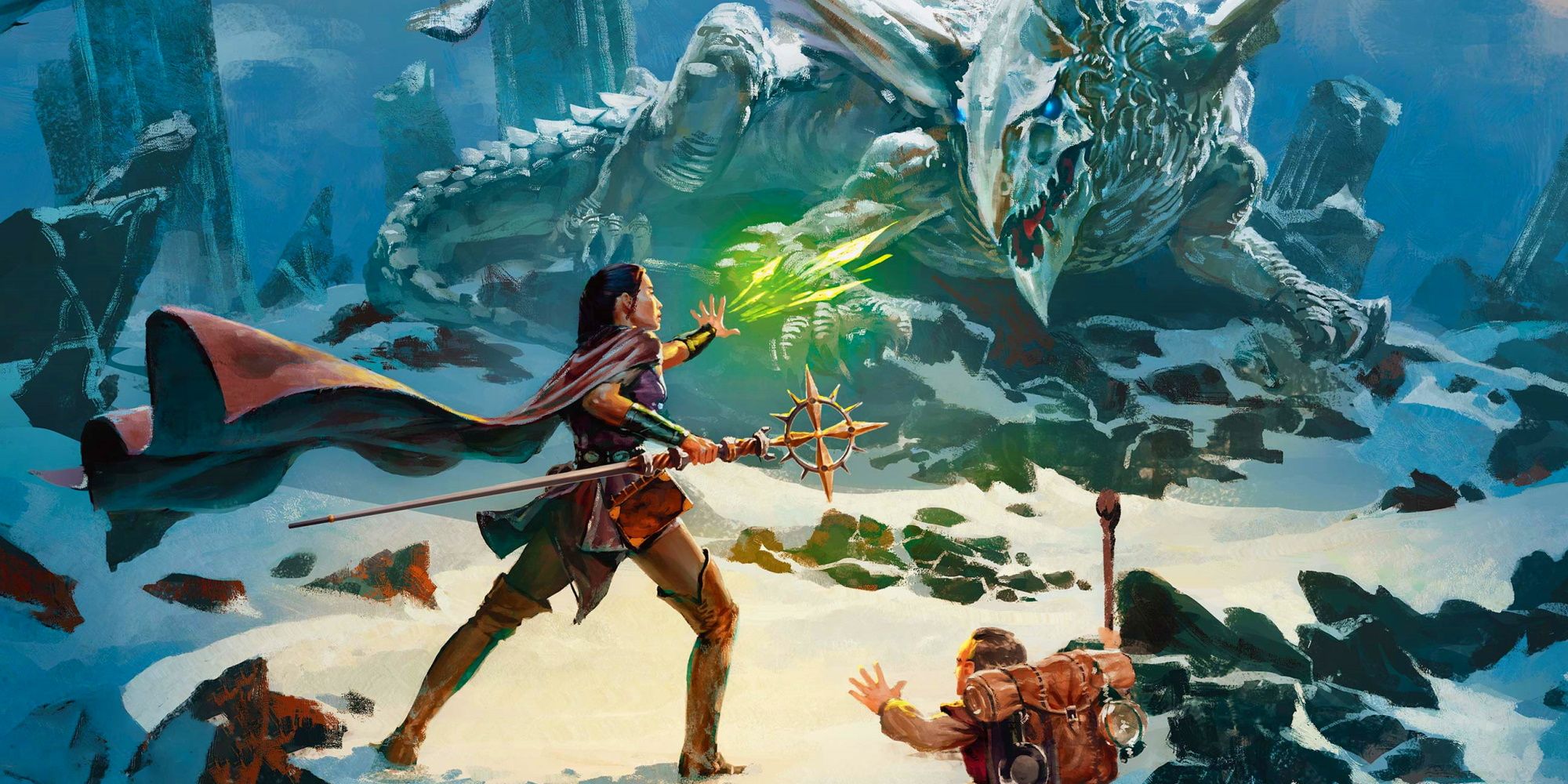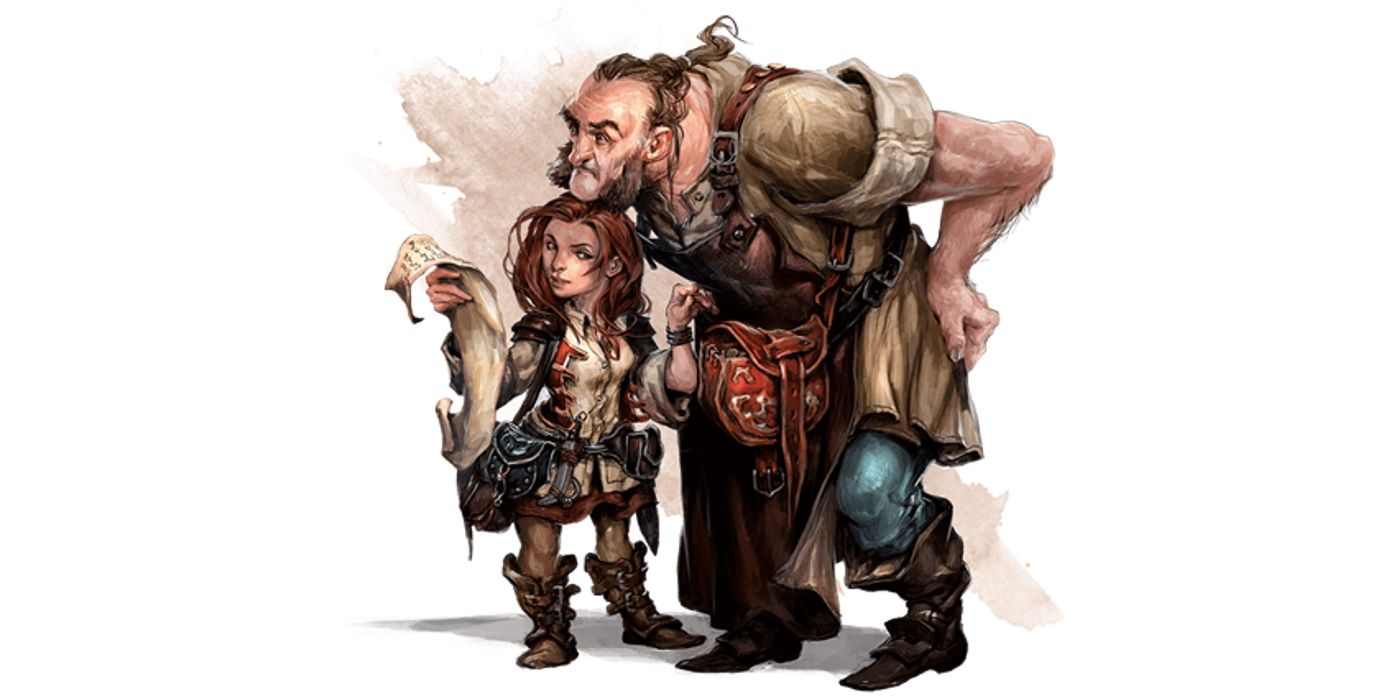When people think of Dungeons & Dragons, they imagine a large group of people sitting around a table; however, some of the best D&D adventures can be run with only two players. A different approach is needed when running an adventure for a very small party, and while it is a challenge, it can be very rewarding for all involved. Focusing the adventure through an individual character or a pair can create a unique experience for both players and DM.
Most adventure modules and campaigns are written with larger parties in mind; however, some are specifically designed for small Dungeons & Dragons parties or are easier to adapt than others. Campaigns of this type are known as a D&D Duet, and this most commonly refers to a DM running an adventure for one player. However, it is not uncommon for the term to also be used for a group made up of a DM and two players.
There can be any number of reasons why players and DM chose to run an adventure as a duet. Whether those reasons are because they cannot get any other people to play with or because they only want to play with each other, there are several options open to them when it comes to choosing an adventure. Here are a few of the best Dungeons & Dragons adventures to run for just two players.
The Sunless Citadel: A Classic D&D Dungeon Crawl
Originally released back in 2000 for D&D third edition, The Sunless Citadel is a brilliant dungeon crawl for parties of any size. The Sunless Citadel is considered by many to be one of the best introductory adventure modules for D&D. Because of this, it works very well for small parties, including ones with just two players.
The Sunless Citadel is broken down into four parts, starting in the village of Oakhurst and then delving deeper and deeper into the titular citadel. The adventure was designed for four players, but by changing some of the numbers of enemies attacking the players, the D&D campaign is easy to adapt for two players. The dungeon will take players from level one to three; however, for two players, it might be better to have them start at level two or even three to give them more hit points and options.
The citadel itself can be challenging to keep track of, and the adventure module advises players to have a party member keep track of all the various corridors and areas of the massive multi-layered dungeons. It would perhaps be better for both players to take turns mapping each area with only two players. Overall The Sunless Citadel is a lot of fun battling twisted Druids, Kobolds, and Goblins in a dungeon that can fit easily into any Dungeons & Dragons campaign setting.
Lost Mines Of Phandelver: A Good D&D Starter Adventure
Lost Mines of Phandelver was the introductory adventure that came with the 2014 D&D Starter Set. This adventure was designed not just for new players but for new DMs, and as such, it walks both DM and players through the adventure without railroading them. Lost Mines of Phandelver is divided into four parts as the players uncover the mystery surrounding strange events in the frontier town of Phandalin.
The adventure was designed for four to five players starting at level one and covers levels one through five. However, DMs can run Lost Mines of Phandelver without difficulty for two players with only minor changes. To adapt for a smaller party, DMs could reduce the number of enemies in certain areas and even lower boss HP depending on the players' Dungeons & Dragons classes.
Quite a few areas within Lost Mines of Phandelver have players facing multiple enemies, some with pack tactics, which would quickly overwhelm a small party of one or two. The easiest way to address this is to cut the numbers down significantly. Rather than having the characters face four Goblins, just have two, or even one in the case of more powerful enemies such as Hobgoblins.
Dragon Of Icespire Peak: A Sandbox D&D Adventure For Two
Dragon of Icespire Peak is the adventure that came with the 2019 D&D Essentials Kit and introduced new rules for one-on-one combat and adventures. Designed for one to five players, Dragon of Icespire Peak is a classic D&D sandbox adventure, so it does not follow a rigid structure. The players start in the town of Phandalin, where they can receive a few different quests, which dictate where they go as they progress from level one to six.
However, many who have played Dragon of Icespire Peak have stated that although the module did come with advice for running the adventure for one player, many of the encounters were not balanced correctly for this. The adventure is written under the assumption of a larger party, as many D&D adventures are, so some of the earliest encounters for a level one were quite deadly. A more experienced DM would perhaps be better, in this case, to help balance the Dungeons & Dragons combat encounters more and tweak the adventure as needed.
Tips For Running A Two-Player D&D Adventure
There are a few ways DMs can help when running an adventure for one or two players. A good tip is for DMs to help make up the numbers in the party by creating an NPC to join the players. In Dragon of Icespire Peak, these characters are referred to as sidekicks and have set roles within the group. These characters are designed to balance the numbers in combat and help with fighting, and DMs should discuss with players how involved they would want these companions to be in the roleplay of the adventure.
However, a DM should adapt this NPC to what the party needs, which will depend entirely on the character class chosen by D&D players. DMs should be involved in character creation alongside their player or players. This will allow them to know ahead of time the strengths and weaknesses of the character in question and adapt the adventure and NPC accordingly.
Several resources are available to DMs looking to run a campaign or one-shot with one or two players. D&D Duet offers lots of advice and tips specifically for running an adventure or campaign with just a DM and one player. Expeditious Retreat Press also put together a series of one-on-one adventures available for purchase through links on its website.
The nature of D&D Duets with only two players means that more emphasis is put on role play over combat. This creates a new kind of narrative that can be much more personal than that created in a typical D&D group. This unique kind of campaign is a version of Dungeons & Dragons worth checking out.
Sources: D&D Duets, Expeditious Retreat Press

